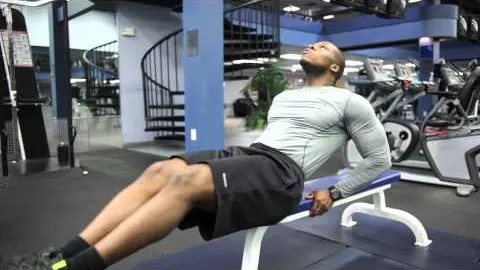

The seated knee up raise exercise is a fantastic way to target and strengthen your core and lower body muscles. It is particularly effective for toning your abdominal muscles, hip flexors, and quadriceps. This exercise can be performed by people of all fitness levels, making it an accessible option for anyone looking to improve their strength and flexibility.
To perform the seated knee up raise exercise, follow these simple steps:
Remember to maintain a slow and controlled movement throughout the exercise. Focus on using your abdominal muscles to lift your legs, rather than relying on momentum. Aim to perform 10-15 repetitions on each leg, and gradually increase the number of sets as your strength improves.
Core Strength: The seated knee up raise exercise targets your core muscles, including your rectus abdominis, transversus abdominis, and obliques. By engaging these muscles, you can improve your core stability and overall functional strength.
Hip Flexor Flexibility: Regularly performing seated knee up raises can help increase the flexibility of your hip flexors, which are responsible for lifting your knees towards your chest. Improved flexibility in this area can have a positive impact on your overall mobility and help prevent hip and lower back pain.
Quadriceps Activation: As you lift your knees towards your chest during the seated knee up raise exercise, your quadriceps muscles are engaged. Strengthening these muscles can improve knee stability and support healthy joint function.
Convenient and Accessible: The seated knee up raise exercise can be performed almost anywhere, as long as you have access to a sturdy chair or bench. This makes it an excellent option for incorporating into your daily routine, even if you don't have access to a gym or exercise equipment.
To maximize the effectiveness and safety of the seated knee up raise exercise, keep the following tips in mind:
Maintain Proper Posture: Sit up tall and avoid slouching during the exercise. Keep your shoulders relaxed and away from your ears.
Breathe: Remember to breathe evenly throughout the entire movement. Exhale as you lift your knee towards your chest, and inhale as you lower it back down.
Start Slowly: If you're new to this exercise, start with a smaller range of motion and gradually increase it as your strength and flexibility improve.
Listen to Your Body: If you experience any pain or discomfort, stop the exercise immediately and consult a healthcare professional. It's important to perform exercises within your comfort level and avoid pushing yourself too hard.
The seated knee up raise exercise can be incorporated into your workout routine in a variety of ways. Here are a few suggestions:
Warm-up: Use the seated knee up raise exercise as part of your warm-up routine before engaging in more intense physical activity. This will help activate your core and lower body muscles and prepare them for the workout ahead.
Strength Training: Include the seated knee up raise exercise as part of your strength training routine. You can perform it as a standalone exercise or combine it with other core and lower body exercises for a full-body workout.
Active Breaks: If you have a sedentary job or spend long hours sitting at a desk, take regular breaks to perform a few repetitions of the seated knee up raise exercise. This will not only help break up your sitting time but also engage your muscles and promote blood flow.
Stretching: After a workout or at the end of the day, use the seated knee up raise exercise as a stretching movement to improve flexibility and alleviate muscle tightness in your hips and legs.
The seated knee up raise exercise is a versatile and effective exercise for strengthening your core and lower body muscles. By incorporating this exercise into your fitness routine, you can improve core stability, enhance hip flexor flexibility, and strengthen your quadriceps. Remember to start slowly, maintain proper form and posture, and listen to your body's signals. With regular practice, you'll experience the benefits and see improvements in your overall strength and fitness levels.
If you're looking for a gym, fitness club or yoga studio, you've come to the right place.
You can find information about gyms in your area. Browse catalog of gyms and find gyms with classes which are you looking for.
On gym page you can find simple information like address, phone or website. You can find list of available classes. You can check availability of personal training or small group classes. On place page you can also see information about open hours.
You can find gyms near you with amenities, courts, studios and equipments.
Use our map to find gym at your city or district.
In Gym Navigator you can find list of exercises with movies for many body parts.
You can browse exercises catalog and find exercises the best of you.
You can also find exercises grouped into workout plans, which you can use to improve you body. Each routine show you exercises one by one and give you possibility to count you progress and count down rest time.